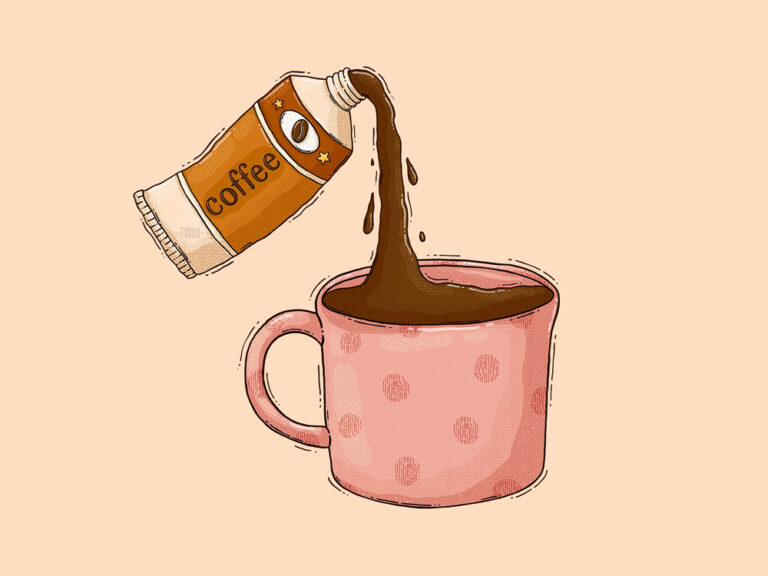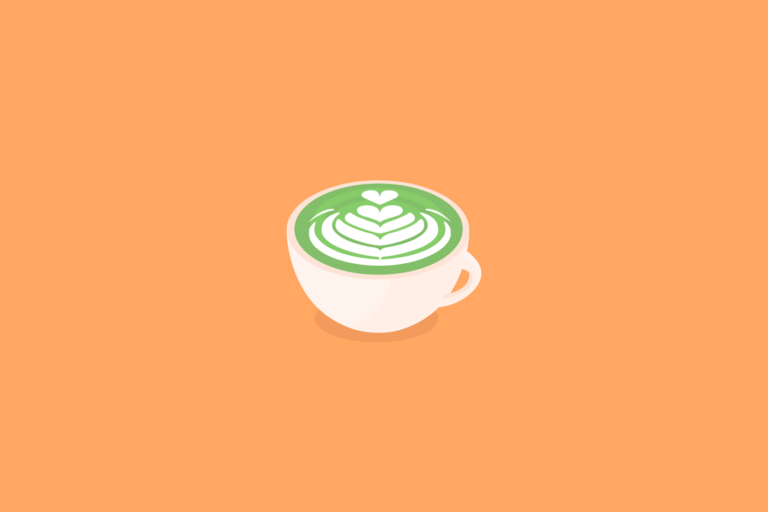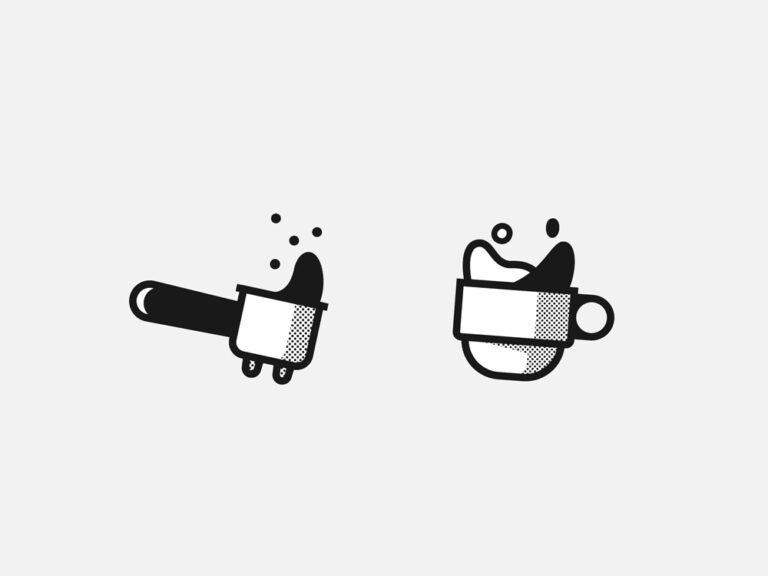
This post may contain affiliate links. As an Amazon Associate and a partner of other brands, I get a small commission if you purchase through my links, at no extra cost from you.
Coffee vs latte! I’m sure you’ve heard it all before: “coffee is for morning people” or “latte is for afternoon people”.
Sound familiar?
Well, you’re in luck because I don’t want to perpetuate this tired old argument any longer!
I’ve gathered information on what exactly makes coffee and latte different, where they come from and how to make them correctly.
I don’t want to bore you with a long, drawn-out article so let’s get straight down to the differences.
Coffee vs Latte – An Overview


A quick look in the dictionary explains that a latte is an espresso coffee mixed with hot milk whereas coffee is just that black espresso coffee.
Coffee is made by creating an espresso shot which means that the machine uses steam to force the hot water through the ground coffee.
This creates a concentrated drink called an espresso coffee.
Milk is then added to this for a latte, though it can also be frothed for a cappuccino or flat white.
The latte being used in this article is the latter because it’s frothed using a steam wand.
So while coffee is made by using hot water, a latte uses hot milk.
So instead of just mixing the espresso shot with hot or cold milk, a frothed mixture is used to give it a layer of foam on top to blend the two together.
This creates a creamy texture and allows you to enjoy your latte.
Coffee vs Latte: Where Do They Come From?
Now that you know what makes coffee and latte different, it’s time to figure out where they actually originate from.
A common misconception is that a latte is made by simply putting milk on top of espresso, but one has to know the history of both coffees and lattes to get the full picture.
Coffee was actually discovered in Ethiopia in the 12th century when the monks noticed that eating berries from a certain tree made them euphoric.
They began cultivating and roasting these beans and giving them to pilgrims, which commonly traveled to Mecca to pray.
The drink was then carried out of Africa and traveled through Arabia and Turkey, where it was nicknamed “Mocha” after the port it sailed to.
Unfortunately, most of the Mocha beans were lost due to the war with Portugal but some did survive and ended up in South America, where they gained popularity.
It was the Spanish who took the beverage to Europe, where it became known as “Cafe de Espresso”.
Nowadays, coffee is grown all over the world and you can even purchase beans online.
One of these beans is used to create an espresso coffee though you can also mix them with your frothed latte.
As for lattes, there is some debate on where they came from.
Some say that it’s an Italian word meaning “milk” while others say that it comes from the French word “lait”, which means milk or cream.
The most accepted theory is that the latte was created by the Ottomans in Turkey during the 17th century, who would often mix sugar and spices with their coffee.
Flat White vs Latte
Many people believe that a latte and flat white are the same but this isn’t actually the case.
Both drinks use steamed milk and espresso shots, but there is a difference in the texture of the drink.
A latte has a creamy texture resembling soft whipped cream while a flat white has a velvety smooth texture – though it’s not as thick as the latte.
So while both drinks use steamed milk and espresso shots, their textures differ.
Latte vs Americano
This is another drink that people commonly confuse with a latte.
A lot of people say an americano is just an espresso with hot water added but this is only partially true.
In fact, the americano actually predates the latte so you can imagine how long-lasting this incorrect assumption must be!
In actual fact, the americano is a double shot of espresso that uses hot water to create a less concentrated drink.
So unlike a latte, it uses more water and less milk to make less condensed milk for your espresso.
Pour Over vs Latte
A pour over is made of coffee dripped onto a filter on top of your mug.
The hot water passes through the ground beans and filters into your cup.
This method is simple and requires little to no equipment, however, it’s not very easy if you’re on the go.
A latte is made by frothing milk and pouring it over espresso, so while they both use milk and coffee, they differ in technique.
I hope this article has cleared up any confusion you might have had about the latte vs coffee debate!
I’m not finished with the coffee vs latte debate. Let’s go on!
How To Make The Perfect Latte Without a Coffee Maker
What you’ll need:
Instructions:
Of course, with an espresso machine, things will get quicker. But it’s basically the same steps when building your cafe latte!
How To Make The Perfect Latte
1. Use Quality Milk
You want to make sure that you use quality milk for your drinks, especially if you’re making them in a good latte machine.
For lattes, you want to go for fresh milk because it doesn’t go bad despite the heat of the froth.
When it comes to cappuccinos, you can use any kind of milk but it’s advisable that you choose one that’s skimmed so it has no fat.
2. Be Patient
You have to be very patient when making lattes because you don’t want the foam to get too thick or too thin.
You can make it look beautiful by adding a snow cap but this is not essential.
Just make sure that the foam is coming out smoothly and consistently over the whole drink. It’s also important that you measure your frothing milk accurately so that you don’t end up with too much or too little.
3. Make Your Espresso Shot First
It’s always best to make your espresso shot first because the longer it sits, the more bitter it can get.
If you make your latte after making the espresso shot, it will mask the bitter taste of the coffee and warm up your cup.
This will allow you to save time by not having to warm up your cup separately!
4. Always Use Fresh Ingredients
Using fresh ingredients will give you the best result for your lattes and cappuccinos.
This is because the milk that you use must be able to create a foamy layer without any lumps that will ruin your drink.
You can always use milk frothers to get an even layer of foam, but it’s important to get your hand on the best ones so you can get the best results.
Make sure that your espresso shot has been absorbed by your milk before adding more froth.
When making your latte, it’s important to make sure that your espresso shot has been absorbed by the milk before creating more froth.
This is because it doesn’t give you a smooth result if there are still bubbles from the espresso shot floating around in your drink.
You want the layers of foam to have a unified texture so these bubbles need to be absorbed first.
5. Don’t Use Too Much Milk
It’s important that you don’t use too much milk for your lattes and cappuccinos.
This is because this will give you a layered effect, but it will also make the drink look extremely messy.
Milk should go to the top and then froth evenly over the rest of your drink so that the texture is uniform.
If you use too much milk, it will create an explosion of foam as well as too many lumps.
6. Keep an Eye on Your Foam
It’s important that you keep a close eye on how much foam you’re making.
If your foam is getting too thick, it may make the drink look messy or create bubbles if froth is spilling everywhere.
You want to make sure that the foam layer is even because this creates a uniform texture, but your drink will look aesthetically pleasing if your foam layer reaches around 1 cm.
7. Froth only what you need for your latte
You should always froth only what you need for your lattes and cappuccinos in order to avoid wasting milk.
You can always taste your drink when it’s done so you know whether or not your froth is adding the right level of foam.
Also, if you have leftover froth, it will start to drip down so you have to be careful when making lattes.
8. Don’t Overheat the Milk
Heating up your milk is important because it allows the mix of milk and espresso shots to create a froth.
However, you should never overheat it because this will affect the taste of your drink as well as produce a chunky texture.
This is why there are now plenty of milk frothers available that you can use to heat up your milk at just the right temperature!
9. Use a Long Spoon
When you’re pouring your latte or cappuccino into a cup, you should do so using a long spoon or a spouted pitcher.
This way, it will be easier to get the exact amount of froth that you’re looking for.
You can also use an espresso shot to create more foam if you don’t have enough froth!
Don’t be afraid of making small adjustments
If you’re not confident about your ability to pour your drink, you can always make small adjustments so that it will look perfect.
If you feel like your latte or cappuccino is too thick, you can always warm up the froth so that it looks thinner.
If it’s too thin, you can squeeze some milk out of your frother or scoop some foam up if there’s milk left over that’s too dry.
Final Thoughts on Coffee Vs Latte
I hope you’ve enjoyed this quick coffee vs latte article.
As you can see, making lattes at home is very easy.
It might take a little more work than making regular coffee, but it’s worth the effort because your drinks will taste amazing.
You can make it as simple or as complicated as you want, depending on what you’re looking for from your drinks.
Just remember the tips from this article and you should be able to make lattes every time your mouth demands one.






